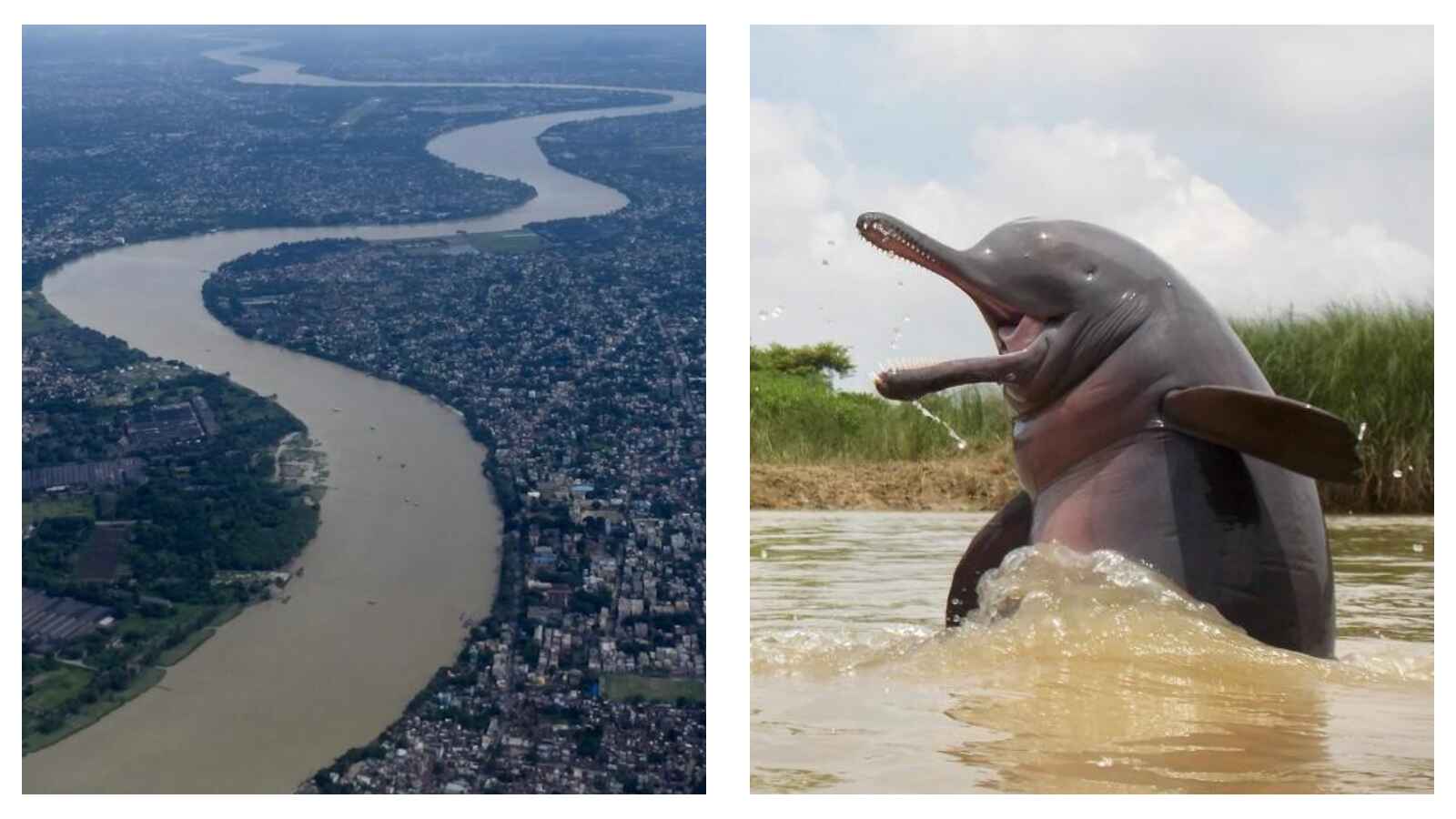By Eleni Poulios
The Ganges is not only India’s longest and most holy river but also the home of more than 6,000 so-called Gangetic dolphins – a species of river dolphin with a very long snout that is almost completely blind and swims sideways whilst remaining underwater most of the time.
They are chiefly found in the Ganges-Brahmaputra River system in the north of the country.
According to a recent survey, India’s rivers are home to a total of 6,327 river dolphins, with most being of the Gangetic type while only a handful are Indus river dolphins, which are typically found in Pakistan.
The International Union for Conservation of Nature has classified both species as endangered.
Between 2021 and 2023, researchers from the Wildlife Institute of India were able to produce a detailed count of the country’s river dolphins by monitoring 58 rivers across 10 different states.
Experts have said that the survey is highly important for tracking the populations of species.
The ‘tiger of the Ganges’
Ravindra Kumar Sinha, a conservationist, says that there used to be little awareness about India’s river dolphins.
That was the case up until the early 2000s. In 2009, however, in order to boost conservation, they were declared India’s national aquatic animal.
This led to an action plan being put in place in 2020 and a research centre specifically dedicated to the cause was finally opened in 2024.
These efforts have helped to revive river dolphin numbers, but there is still a long way to go, conservationists say.
Known as the ‘tiger of the Ganges’, the Ganges dolphin is at the top of the food chain in its ecosystem and therefore a bioindicator species for the wider health of the river system.
READ MORE: Endangered but safe: Jeju improves sanctuary for Indo-Pacific bottlenose dolphins

What dangers are the dolphins facing?
The dolphins are at risk of being killed either accidentally, when they get caught in fishing nets or collide with boats, or on purpose, as poachers hunt them for their flesh and blubber.
It is said that fishermen often do not report accidental deaths of dolphins because they fear that they could get in legal trouble.
Indian wildlife laws call for strict penalties when it comes to dolphin killings. As a result, fishermen often end up secretly disposing of dead dolphins to avoid fines.
Another factor which endangers Gangetic dolphins is the growing industry of river cruise tourism.
This type of tourism has increased over the past decade, with dozens of cruise trips now operating on the Ganges and Brahmaputra rivers and threatening the dolphins’ habitat.
“There’s no doubt that disturbances from cruises will gravely impact the dolphins, which are sensitive to noise,” Ravindra says.
He fears that the Gangetic dolphins could be pushed towards extinction due to the high volume of water traffic.
On top of that, the dolphins’ evolutionary traits are also making them more vulnerable to threats.
They are almost completely blind and rely on echolocation to navigate the waters and find prey. This suits their habitat but at the same time exposes them to modern threats as an inability to see well paired with a slow swimming speed results in the dolphins colliding with boats and other obstacles.
Moreover, this species reproduces very slowly, with females usually giving birth to one calf every two to three years.
Nonetheless, Ravindra has a positive outlook on the future of river dolphins in India: “Government initiatives have played a big role in saving the dolphins. A lot has been done but a lot more remains to be done too.”
YOU MAY ALSO LIKE: Reviled storks find hope among Indian women protectors
